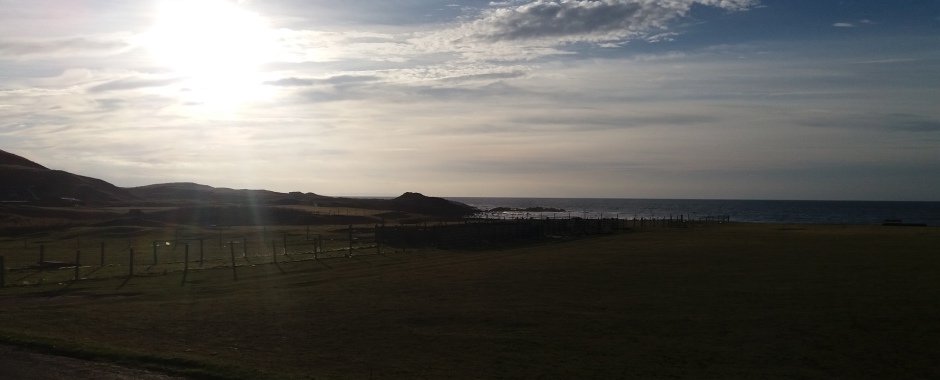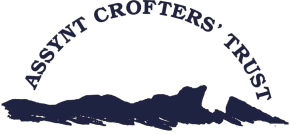
The Realisation of the Dream
The history of Assynt is regarded by many as a history in miniature of the Scottish Highlands, which was the focus of bitter inter-clan struggles for territorial possession following the end of Viking domination after the battle of Largs. Ultimately Assynt became the possession of the MacKenzies of Seaforth, and the last of that family to have control was Kenneth, who eventually died in poverty on the Isle of Lewis in 1740. The Estate had been sequestrated and Assynt remained without a legal owner for almost 20yrs until sold by judicial roup in July 1757. Lady Strathnaver was the highest bidder, and thus Assynt passed into the hands of the house of Sutherland. After the death of Lady Strathnaver and the Earl William, Assynt, together with the other lands of Sutherland, passed into the hands of the infant Countess Elizabeth. She eventually married an English noblemen who succeeded to the title of Marquis of Stafford, and to a fortune.
Thus began the most vile chapter in the treatment of the peasant people of Sutherland and of course of Assynt - the period known as the Clearances, which lasted for almost a century. Today the marks of the Clearances are still tangible, with evidences abounding of cleared townships in the now almost uninhabited interior of the county, while the relatively sparse population inhabits the infertile coastal region. The people whose ancestors had inhabited the fertile straths and glens were forcibly evicted by the Duke to make way for sheep which were then yielding great financial returns. In the years between 1811 and 1823 around 15,000 people in Sutherland were cleared off the land and had their homes destroyed. As a comparison it should be noted that today the entire population of Sutherland is about 13,500 people.
A century later in 1913, as the result of financial difficulties, the then Duke offered the 60,000 acres comprising Assynt and Eddrachillis for sale. The purchaser was Major General William Stewart, who bought his native territory. He had left Assynt as the penniless son of a destitute crofter from the village of Nedd and had made a fortune in Canada as a railroad engineer. The outbreak of the great war, and personal tragedy, however, largely frustrated the philanthropic intentions of Stewart for his own people.
In 1935 the Estate was again sold and on this occasion there were two bidders, the Vestey family and the Duke of Westminster who wanted Assynt as a wedding gift for his prospective son-in-law Mr W Filmer-Sankey. Westminster was the victor, but, soon after, Title to Assynt passed into the hands of Filmer-Sankey, who re-sold most of it to the Vesteys with the exception of a small area around Loch Assynt.
In 1989 Edmund H Vestey renamed the coastal crofting strip - comprising thirteen townships and a total area of 21,300 acres (9,000 Ha) - as North Lochinver Estate, and sold it for £1,080,000 to a Swedish land speculator. In none of these transactions were the interests of the people who lived and worked on the land considered to be relevant.
In 1992 Scandinavian Property Services Ltd went into liquidation with a Swedish bank as the main creditor. A London-based Liquidator was appointed and the selling agents who had been employed by the Vestey family to conduct the original sale were re-appointed. The estate which had been sold to Scandinavian Property Services in three lots was now to be broken up into seven lots, no concern being shown for the impact of this process on the crofting activity of the inhabitants.
The office bearers of the Assynt branch of the Scottish Crofters’ Union became aware of what was going on and in mid-June called an emergency meeting of members to alert them to the potential implications of the further break-up of the Estate. It was unanimously agreed by all of those present to give a mandate to the office-bearers to seek to resist the Liquidator’s intentions by making the most appropriate use of crofting legislation. At a further public meeting called a few weeks later, a proposal, judged by some to be bordering on the lunatic, was put to those present, that an attempt be made to raise sufficient money for the crofters to bid for the Estate themselves. This was agreed to and a steering committee was formed which consisted principally of the grazings clerks of the thirteen townships on the Estate - the rôle of the committee being to guide the project and to act as links with the crofting people.
Within three months a feasibility study and business plan had been put together with financial help from the Crofters’ Union and Caithness & Sutherland Enterprise. On July 1 there appeared the first of many reports in the national press about the audacious attempt of a few motley crofters in the remote N W Highlands to win back the land of their forefathers.
The campaign caught the public imagination, donations began to roll in and negotiations began in earnest with the Liquidators. Two events stand out in this period. The first was when the third public meeting was called to inaugurate the public appeal and, surrounded by reporters and television cameras, Assynt Crofters’ Trust was launched accompanied by an emotional pledge of support from our member of Parliament. The second was the occasion when a select group from the steering committee went to our accountants office in Inverness to meet with the Liquidator and his assistant. That meeting was reminiscent of Hollywood drama and brought home to the City of London accountant the resolve and determination of his opposition. One suspects that he was not a little shaken by the experience.
After having had two offers to purchase the Estate rejected by the selling agents, a deal was agreed in December 1992 - almost exactly 6 months after the original public meeting was called.
Assynt Crofters’ Trust took Title to the land on 1 February 1993
- an historic date in the struggle to change the laws of land tenure in Scotland, to enable the ordinary people who live and work on the land to have some control over their own economic future. The agreed purchase price for the total asset was £300,000 of which almost half was raised by the crofters and their supporters throughout Britain - indeed donations came from abroad, from some of those who traced their ancestry to Highlanders who had sought a new life in the Colonies during the dark days of the Clearances. The remainder of the purchase price came from public agencies, Sutherland District Council and Highland Regional Council in the form of grant and loan. A generous donation was given by the Highland Fund to assist with the initial administrative burden of the Trust.
Today the Estate is in the possession of the crofters, free of debt and administered by a Board of Directors elected by democratic vote by each of the thirteen townships making up the Estate. The Board has attempted to fulfil its pledge to improve the prospects for Trust members by initiating a variety of challenging projects including, amongst others, a housing needs survey in collaboration with Scottish Homes, a number of woodlands projects managed by Tilhill Economic Forestry, an EU supported computer-based environmental management project, a Crofter Agri-Tourism research survey, a programme to enhance the native brown trout and the migratory fishings, an annual study tour project involving visits by groups of American senior citizens and an EU supported project in collaboration with a Scottish University and a company of Consultants to investigate the potential for energy conservation in remote rural communities together with the prospects for energy generation from all forms of renewable sources. We have also succeeded in gaining a contract under the Government’s SRO1 initiative for the production of electricity for the grid from a micro hydro electric scheme. However, the main prize of improving the economic prospects of our members has yet to be achieved.
John MacKenzie
May 1998


